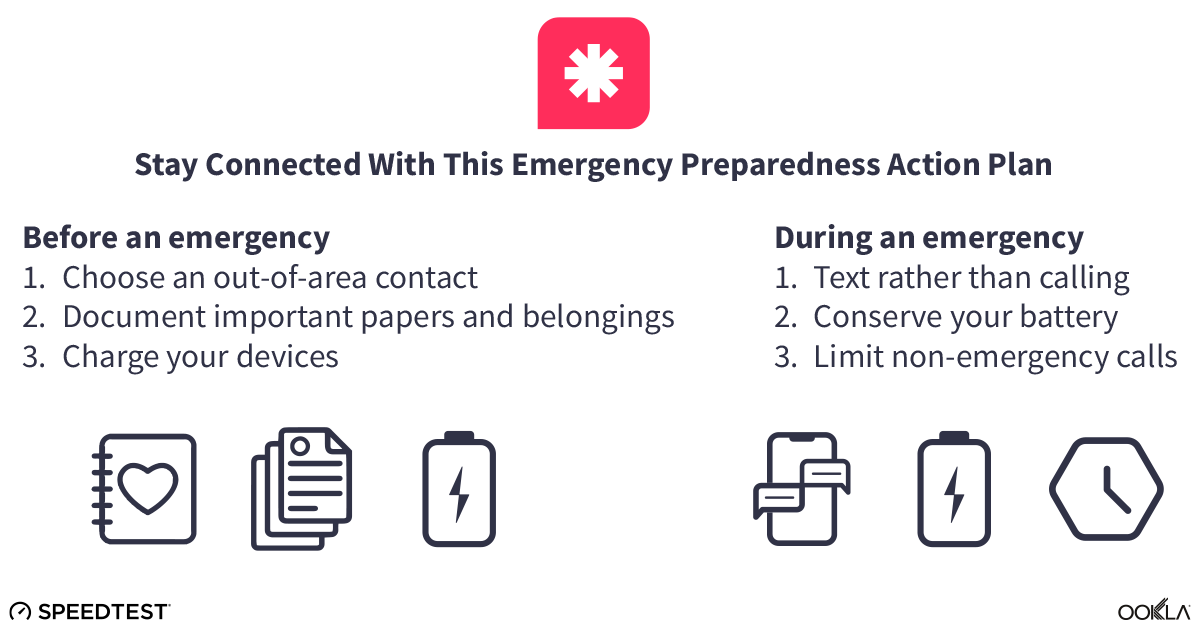Get Ready for Hurricane Season: An Emergency Preparedness Action Plan to Keep You Connected

You may not be able to control the weather, but you can prepare for a natural disaster today with a few easy steps. We've got advice for you on things you can do to boost your emergency preparedness and how to get the most out of your devices during an emergency with this simple action plan. While this is designed to help you in case of a major regional emergency, it can also be helpful if you experience a local emergency like a power outage due to bad weather.
Gather your contacts and important information
One of the key steps to disaster preparedness is to gather important information beforehand. Start by making a list of your emergency contacts (on paper and on your phone) and including at least one out-of-area contact your family can telephone tree with if your local network is down. It's also a good time to take photos of important documents like birth and marriage certificates and keep a digital copy somewhere safe like a password-protected USB key that you can carry with you.
While you have your phone out, take pictures of your home and belongings. If you suffer major property damage, you're going to want those pictures to show your insurance agent what you are replacing. Bonus points if you capture serial numbers on electronics (which can be helpful if you're ever burglarized). This information can be stored in the cloud.
Charge your devices
Your phone will feel like a lifeline when the power goes out. To keep that lifeline in good shape, make sure to charge it as soon as you get the first indication that trouble is on the way. Also charge an extra battery pack if you have one. Have a plan, too, for where you might be able to charge your phone later if the power is out for an extended period. This could be your car or a nearby cafe or grocery store that's either running a generator or on a separate grid. Keep your charger handy (including your car adapter, if needed).
Just remember that you want your battery to last as long as possible, so now is not the best time to stress-stream your favorite show.
Connect strategically
You may have trouble connecting to cell service if the power goes out or if nearby cell towers are destroyed. This also puts stress on the remaining network as more people are struggling to use a network with reduced capacity. Data from Speedtest Intelligence during Hurricane Ian showed degradation in signal and service several days before the hurricane made landfall and for a while after. Fixed broadband may also be out, putting further stress on the remaining mobile network.
Here are some tips to help you and everyone else have the phone service you need:
Text, don't call. It's more likely that a text message will get through because it requires less data. It also adds less stress to the network for the same reason.
Limit non-emergency use. To keep the network as clear as possible and to preserve your battery, now is not the time to live-stream or even to make unnecessary calls.
Use your out-of-area contact. If you can text or call one person who can tell the rest of your loved ones that you are safe, you're freeing up the network and allowing yourself to focus on the next steps of taking care of yourself.
The internet may be down locally. Keep handy a list of other ways to get information like local emergency alerts or radio broadcasts that you can tune into to get vital information.
You might still be able to connect to the internet by using your phone as a hotspot. Again, be mindful of the state of the network, but this is one way to get access to crucial information.
Of course we hope you don't need this information, but planning never hurts. Various nonprofits and U.S. government agencies also have guides for disaster preparedness that go beyond the digital. Read up on what the Red Cross, FCC, CDC, and Department of Homeland Security recommend. Once you have your plan in place, please share this guide with anyone you want to stay safe and connected in an emergency.